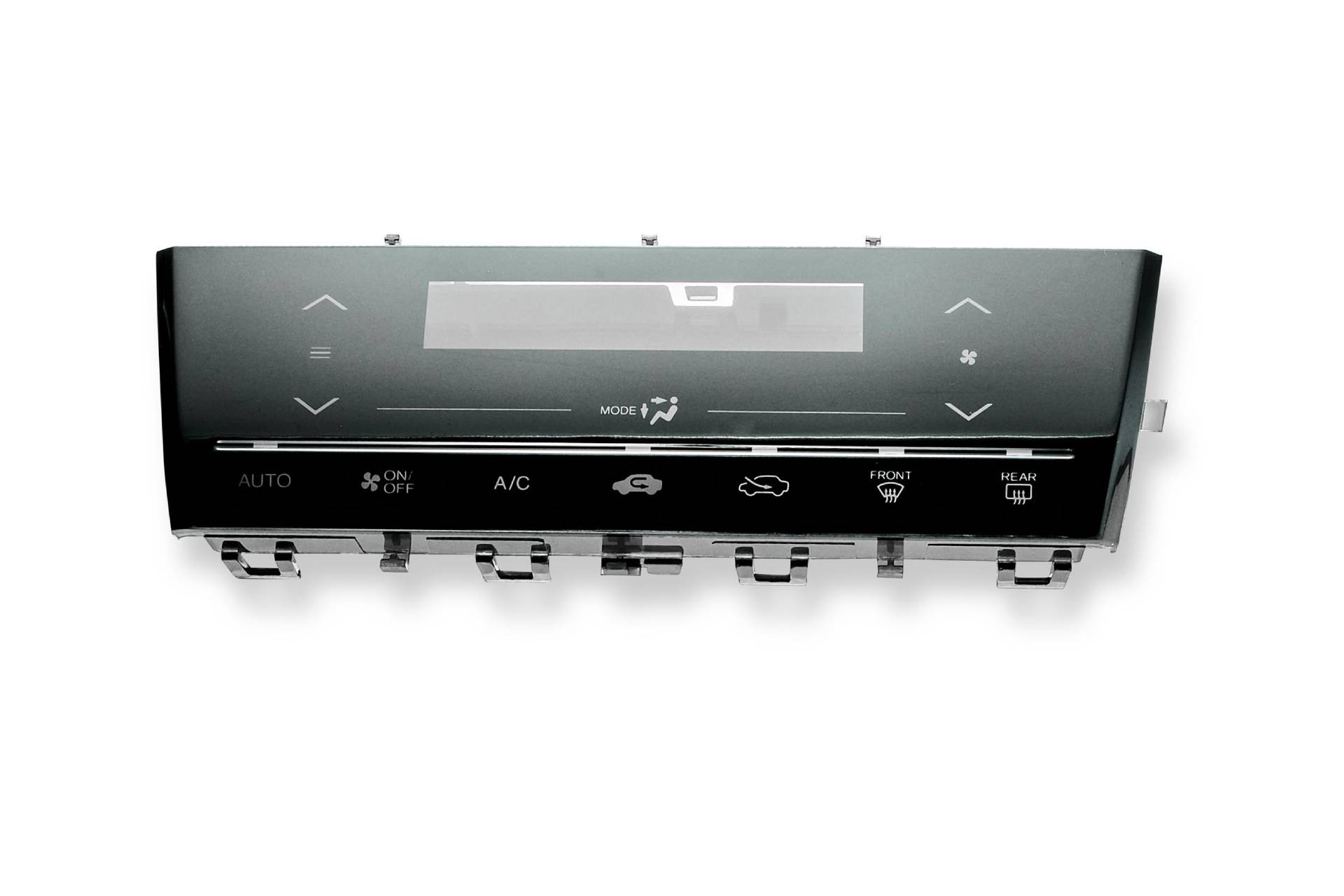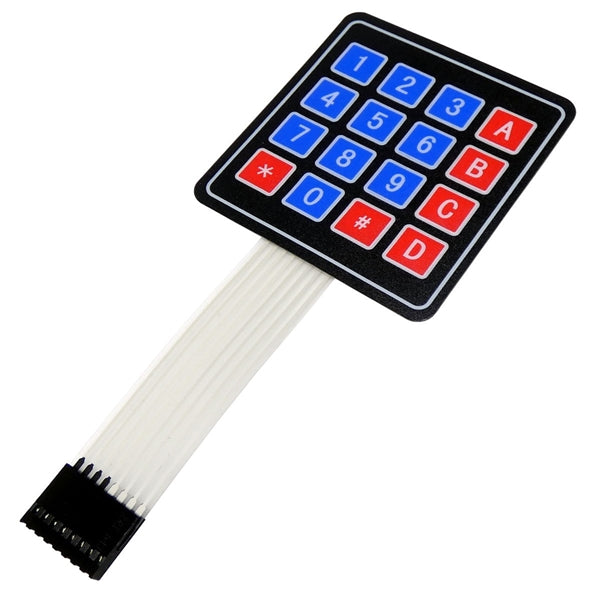The services offered by a qualified membrane switch manufacturer go beyond basic production.
Everything About Membrane Switch Over: Comprehending Its Style and Functionality
When you think of the control user interfaces in contemporary gadgets, membrane layer buttons frequently come to mind. These parts are greater than simply switches; they blend layout and functionality perfectly. Comprehending exactly how they work and what makes them efficient can change your perspective on daily electronic devices. There are nuances to their style and performance that you may not be mindful of. Allow's explore what sets membrane switches aside from various other control systems.
What Are Membrane Layer Buttons?

Their seamless nature makes them easy to clean and resistant to dust and dampness, a crucial feature in several settings. Membrane switches can additionally be tailored relating to form, size, and graphics, permitting suppliers to produce distinct interfaces customized to certain products. And also, they're lightweight and thin, which aids in reducing the overall bulk of devices. On the whole, membrane switches play a substantial role in boosting user experience across a wide array of applications.
How Membrane Layer Changes Work
When you push a key on a membrane switch, it turns on a simple yet reliable system. The leading layer, typically constructed from versatile product, lowers onto a conductive layer underneath it. This activity bridges the space in between conductive traces, finishing an electrical circuit. As soon as the circuit shuts, it sends a signal to the gadget's controller, which interprets your input.
You'll observe that the responsive feedback varies based on the switch style, using either a soft click or a more obvious feedback. Once you launch the trick, the membrane layer returns to its original setting, resuming the circuit and quiting the signal. This procedure takes place virtually immediately, ensuring a responsive user experience.
Membrane layer switches are preferred as a result of their sturdiness and resistance to dirt and dampness, making them ideal for different applications, from home devices to clinical tools. Understanding this operation aids you value their widespread use.
Key Parts of Membrane Layer Buttons
Comprehending the key elements of membrane buttons is basic for understanding their capability and design. At the core, you'll find the graphic overlay, which provides the visual interface for individuals. Below that, there's a spacer layer that divides the circuit layers, guaranteeing that they don't make call until pressed. The circuit layer is where the magic takes place; it contains conductive traces that finish the circuit when you push the switch. One more vital aspect is the adhesive support, enabling the switch to stick to surface areas securely. Lastly, the safety layer guards against environmental variables and put on, prolonging the button's life expectancy. Each part plays a significant function in ensuring reputable performance and customer interaction. By recognizing these elements, you'll obtain understanding right into how membrane changes operate and their significance in different applications.
Materials Made Use Of in Membrane Layer Switch Style
The performance and toughness of membrane switches over heavily rely on the materials utilized in their design. You typically come across polyester and polycarbonate as main substrates because of their superb stamina and adaptability. These materials withstand scrapes and chemicals, making them optimal for requiring environments.
The conductive layers typically utilize silver or carbon, selected for their dependability and conductivity. membrane switch manufacturer. Silver offers premium performance, while carbon is an economical alternative. For the overlay, you may take into consideration a matte or glossy coating, depending upon your aesthetic requirements and individual experience
Make certain to select adhesives that withstand ecological aspects like temperature level and moisture. Selecting the ideal materials will certainly assure your membrane layer switch stands the test of time.
Design Factors To Consider for Membrane Layer Switches
While creating membrane buttons, it's crucial to take into account various aspects that influence their functionality and user experience. Beginning by focusing on the format and switch size; make particular they're user-friendly and easy to browse.
Don't overlook the visuals style; clear labeling and shade comparison are considerable for presence. Confirm your style accommodates environmental variables, like wetness or temperature level variations, which might influence performance. Bear in mind the significance of screening models with real individuals to collect feedback and make required modifications. This repetitive process assists you fine-tune the layout, validating it meets both click for source functional and aesthetic demands successfully. By meticulously considering these aspects, you'll produce a membrane layer button that boosts use and fulfillment.
Applications of Membrane Switches
Membrane switches are versatile components found in numerous applications, from commercial tools to consumer electronic devices. You'll see their impact in machines that require resilient interfaces and in gadgets that take advantage of sleek designs. Understanding these applications helps you appreciate the functionality and usefulness of membrane layer buttons in day-to-day technology.
Industrial Tools Use
When you're wanting to improve the functionality of industrial tools, membrane layer buttons use a trustworthy option that integrates toughness with user-friendly layout. These buttons are perfect for rough settings, supplying resistance to dust, moisture, and chemicals. You'll locate them in control panels for producing devices, heating and cooling systems, and medical tools, where precision and responsiveness are vital. Their low account indicates they fit seamlessly right into numerous devices, saving beneficial area while maintaining simplicity of usage. With adjustable graphics and backlighting options, you can develop an user-friendly user interface for operators, enhancing performance and security. And also, their lengthy life expectancy minimizes maintenance prices, making them a smart investment for your commercial applications. Embrace membrane layer switches to enhance your operations and enhance overall performance.
Customer Electronic Devices Assimilation
In the domain of customer electronic devices, membrane buttons play an important role in improving individual interaction and gadget performance. You'll locate them in tools like microwaves, remote controls, and video gaming consoles, giving a seamless way to interact with modern technology. Their sleek design permits for very easy assimilation right into different products, making controls instinctive and straightforward. With their capacity to integrate graphics and backlighting, you can appreciate a modern aesthetic that complements the gadget's general appearance. Membrane layer buttons additionally guarantee resilience and resistance to dust and wetness, expanding the life expectancy of your electronics. By picking membrane layer buttons, you boost not next simply the functionality but also the style of your devices, making everyday interactions smooth and delightful.
Advantages and Downsides of Membrane Layer Switches
While membrane buttons provide a range of advantages, they likewise come with some downsides that you must consider. One significant benefit is their small layout, making them suitable for space-constrained applications.

Membrane layer buttons can have a shorter life expectancy compared to mechanical buttons, especially under heavy use. They can likewise be much less responsive, which could impact customer comments throughout procedure. Stabilizing these pros and disadvantages will certainly aid you determine if membrane layer buttons are the ideal fit for your task.
Regularly Asked Concerns
For How Long Do Membrane Changes Usually Last?
Membrane layer switches generally last between 5 to 10 years, depending on usage and environmental conditions. You'll intend to assess elements like wear, exposure to moisture, and temperature level changes to assess their durability successfully.
Can Membrane Switches Be Customized for Particular Designs?
Yes, you can customize membrane layer buttons to fit certain styles (membrane switch manufacturer). You'll have the liberty look at this now to pick shades, shapes, and designs that match your project's demands, ensuring they mix perfectly with your overall aesthetic
What Is the Expense Array for Membrane Change Manufacturing?
The expense range for membrane button manufacturing typically drops between $1 and $10 per device, depending on factors like layout intricacy, quantity, and products. You can obtain quotes from makers to locate the very best option.

Are Membrane Layer Switches Waterproof or Immune?
Membrane buttons can be created to be water resistant or immune, depending on products utilized and building approaches. If you need them for wet environments, assure you define those needs during the layout process.
How Do Membrane Layer Changes Compare to Typical Buttons?
Membrane switches are usually thinner and a lot more versatile than conventional switches, supplying a smooth design. They're often less complicated to clean up and incorporate, however might not give the tactile feedback you're utilized to with mechanical options.
Verdict
